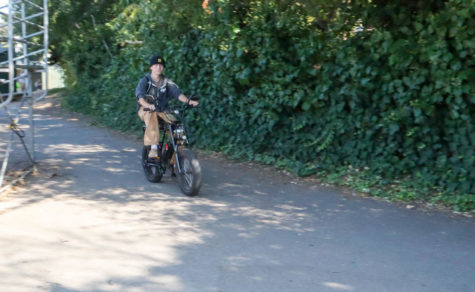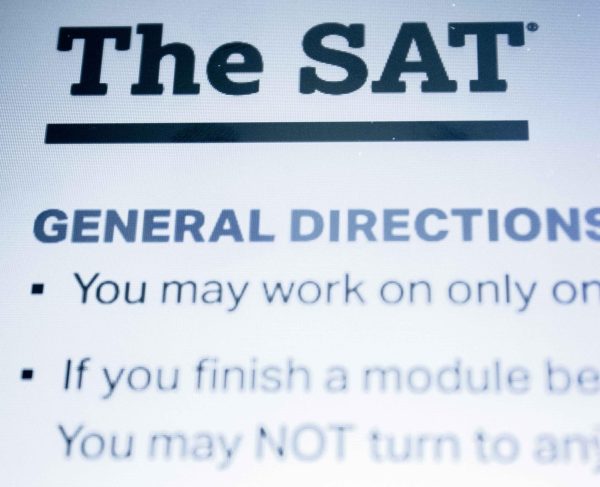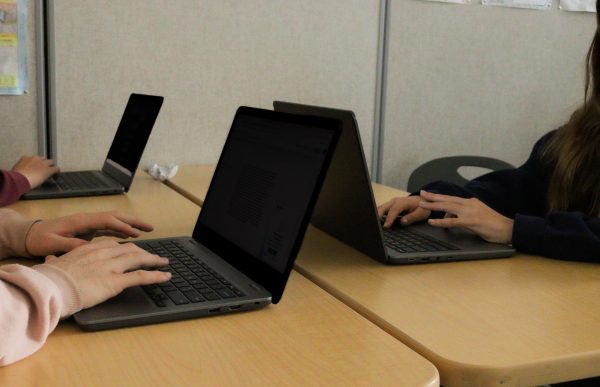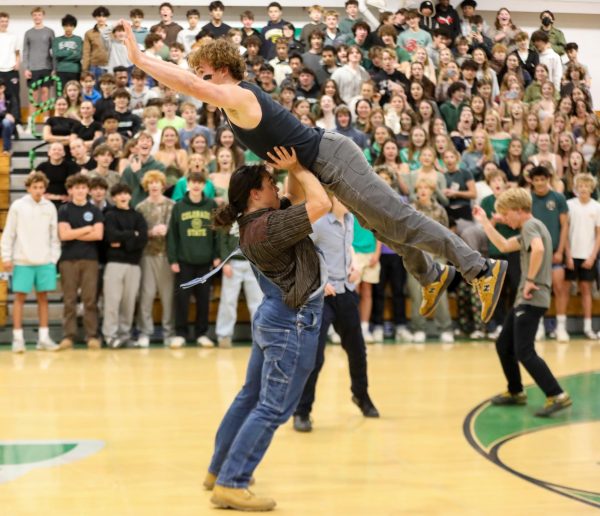California legislature passes electric bike safety regulations
Junior Max Lefferts rides his e-bike on campus on Thursday.
Electric bike (e-bike) popularity grew rapidly among the teen community in the past year. Students throughout Marin ride e-bikes to and from school, sometimes carrying more than one passenger. Due to complaints and parental concerns, the California legislature passed a law regarding e-bike safety.
Anxious parents posted on online platforms such as Nextdoor about teens riding e-bikes in an unsafe manner, oftentimes without helmets.

“Kids on e-bikes is the worst idea ever. And as a parent, I can’t believe people are letting their kids ride an e-bike that easily reaches 30 miles per hour, usually with no helmet,” said Fairfax resident Steven Teijeiro in a post on Nextdoor.
In response to parent concerns, Central Marin police released a statement on Aug. 24, explaining the different types of e-bikes and the laws in place for each type.
There are three categories of e-bikes the new law specifies. Class one e-bikes are pedal-assist only, with no throttle, and have a maximum speed of 20 mph. Class two e-bikes also have a maximum speed of 20 mph, but are throttle-assisted. Class three eBikes are pedal-assist only, with no throttle, and a maximum speed of 28 mph.
For class one and two bikes, riders must wear a helmet if they are under the age of 17. For class three bikes, riders must be older than 16 to ride and must also wear a helmet.
Additional e-bike laws include bans on tandem riding, and a 15 mile per hour speed limit on county maintained pathways, with 250 dollar fines for violators.
Your donation will support the student journalists of Archie Williams High School. Your contribution will allow us to purchase equipment and cover our annual website hosting costs. Each donation will receive a magazine subscription for a year (6 copies a year), and become a part of the important work our publication is doing.
$35 -- Subscription to the magazine
$50 -- Silver Sponsorship
$75 -- Gold Sponsorship
$100 -- Platinum Sponsorship

Sophia is a freshman, in her first year of journalism. She was born in England and lived there for six years. You can find her painting or cooking, and...












